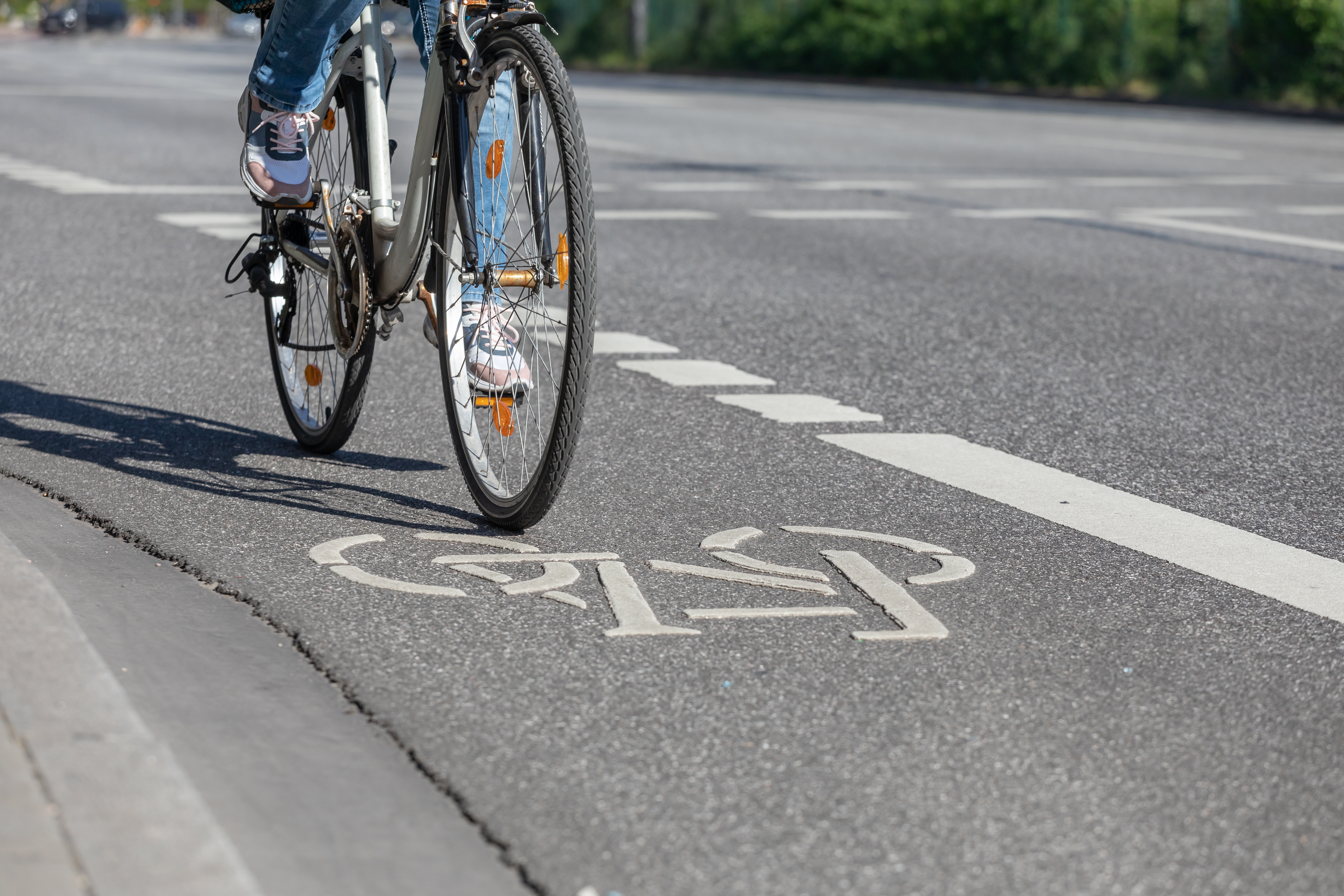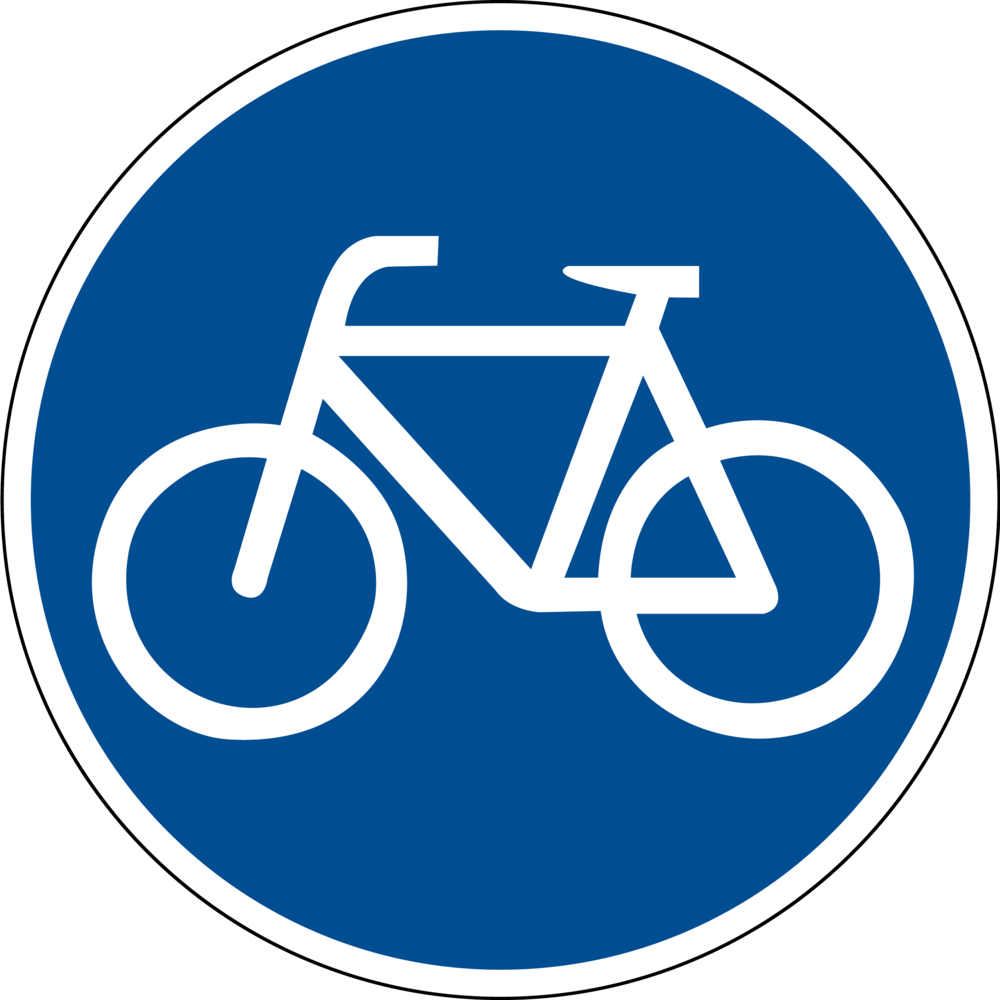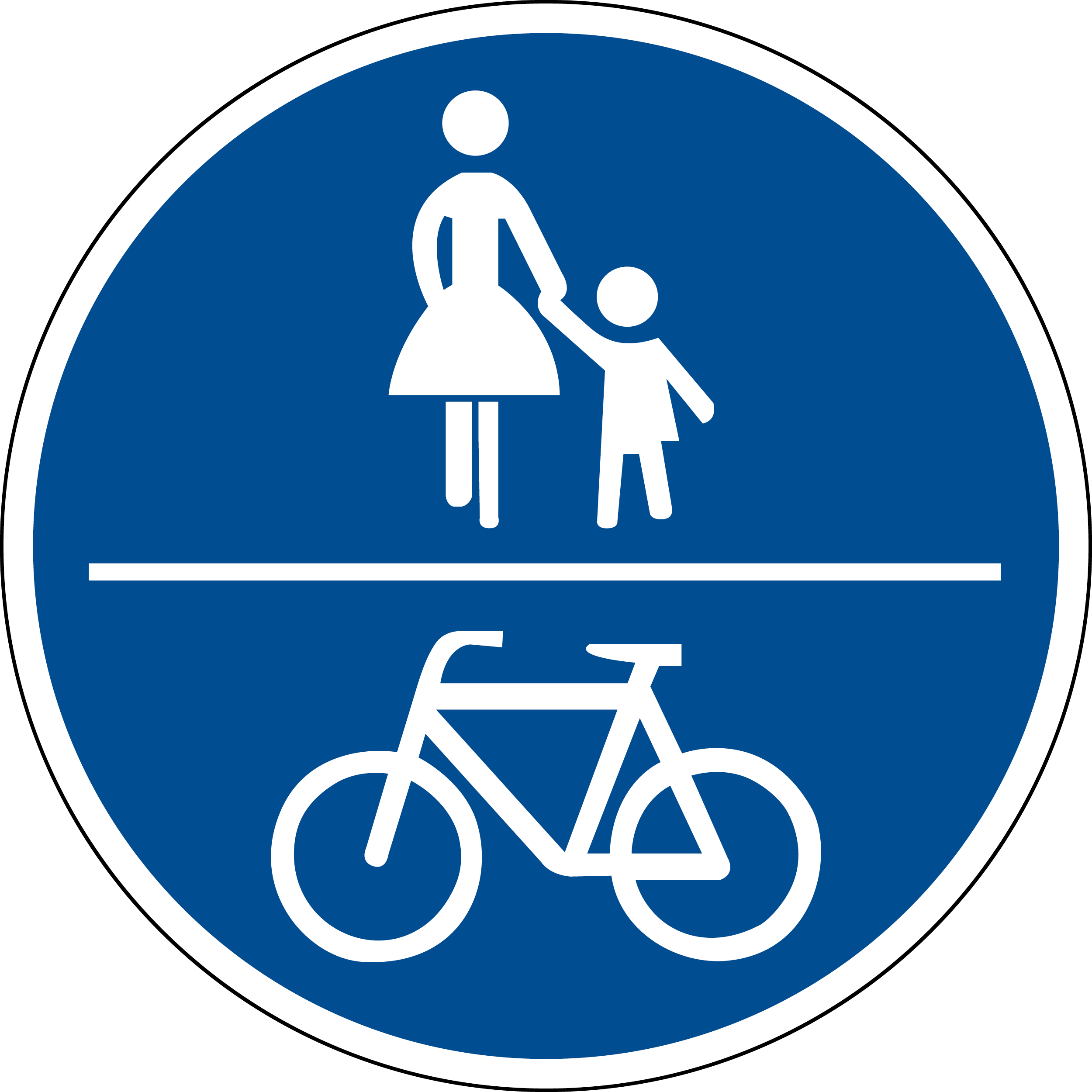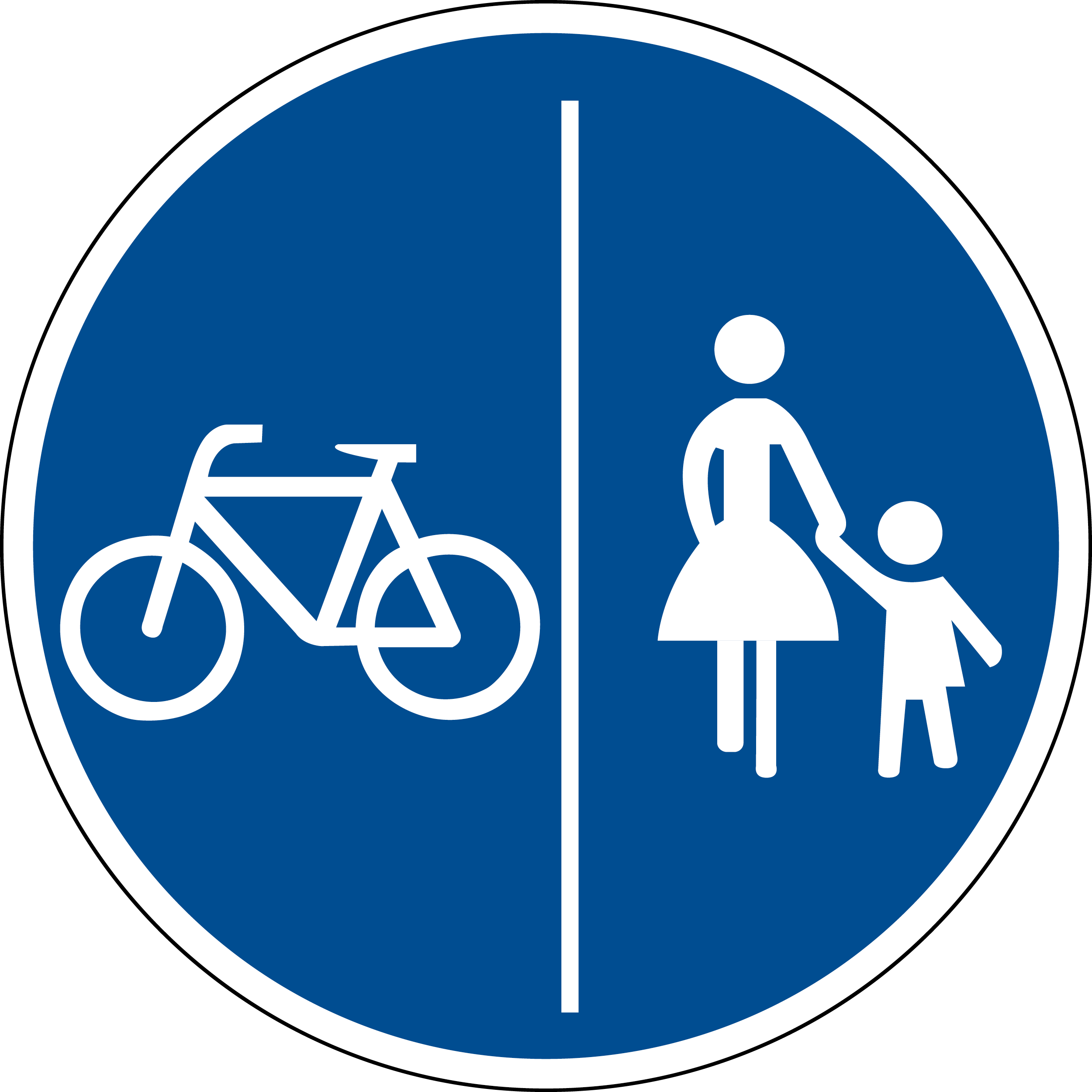More than 100 years ago, traffic planners came up with the idea of shifting cycle traffic to special lanes. The Netherlands led the way: the first cycle path was built in the city of Utrecht in 1885. The first plans for separate cycle paths in Germany date back to the 1920s. The nationwide cycle path network now has a total length of around 40,000 kilometres, which is roughly the circumference of the earth.
How can I recognise a cycle path in Germany?
Outside cities, cycle paths in Germany are usually separate, narrow paths next to the road. Within a city, a solid white line often separates a cycle path from the road. If the line is only dashed, it is a protective lane for cyclists, which may be used by cars if necessary. Cycle paths can also be surfaced with coloured or grey asphalt, special surfaces or red or dark grey concrete blocks. Official cycle paths are marked with a blue sign with a white bicycle on it, and a white bicycle is painted on the path itself at regular intervals.
Do all cyclists in Germany have to use cycle paths?
Children under the age of eight are generally not allowed to ride a bike on roads or cycle paths, which is why they do not yet need a roadworthy children's bike. The little cyclists use the pavement instead. Parents may also use the pavement for the duration of the escort. Special consideration must be given to pedestrians. If there is a cycle path separated from the carriageway, children under the age of eight may also use it.
From their eighth to tenth birthday, children can choose to use pavements or roads and cycle paths according to the German road traffic regulations. To cycle on roads and cycle paths, you need a roadworthy bicycle.
The following applies to cyclists aged ten and over: If the cycle path is marked with a round blue sign with a white bicycle on it, there is no longer a choice. Anyone travelling here by bike must use this path and may not ride on the road. Depending on whether the cycle path and footpath are combined, the following sign variations are available:
| This sign indicates that this is a cycle path. | |
| The sign stands for a shared footpath and cycle path. Consideration is required in order not to endanger each other. | |
| This path is a separate footpath and separate footpath and cycle path. |
Cyclists are free to choose whether to use cycle paths without the blue sign or to cycle on the road.
What rules apply on a German cycle path?
Cycle paths – like roads – are travelled in one direction. In Germany, traffic moves on the right, so cycle paths must be used on the right-hand side of the road. If a cycle path is only available in the opposite direction, you must cycle on the road. Although you are allowed to ride two abreast on cycle paths as long as no other cyclists are obstructed, it is safer to ride on the right and behind each other.

USA: Designated cycle paths away from motorised traffic hardly exist in the USA. The few exceptions mostly run along former railway lines or canals. Cycling therefore mostly takes place on roads. Outside towns, larger roads often have a wide, usually tarmac hard shoulder that is suitable for cycling. With the exception of interstate highways and roads where cycling is explicitly prohibited, cyclists are allowed to ride on all roads. In sparsely populated states where there are no alternative roads, the use of interstate highways is even permitted on some stretches.
China: China was once known as the kingdom of bicycles. This is why the bicycle is still an important means of transport in most Chinese cities today. On larger roads with a lot of traffic, there are usually hard shoulders that cyclists can use. These hard shoulders are often not available on the less busy side roads.
Mexico: In Mexico, the main roads are wide and well tarmacked, and there is often a wide hard shoulder for cyclists. In cities, it is often quite narrow for cyclists because there is almost always no hard shoulder.
Denmark: Denmark has 12,000 kilometres of marked cycle paths, making it the country with the most cycle paths in the world. In the Scandinavian country, nine out of ten people own a bicycle, 25 per cent of whom use their bike as their main means of transport every day for a distance of five kilometres. Copenhagen has the largest cycling infrastructure in the world, consisting of cycle paths and a cycle motorway that connects the capital with more than 25 surrounding cities.






